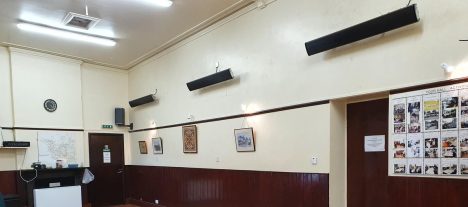If Infrared Heat Warms People and Objects, Will The Room Be Cold? Myth Buster Ep. 4

The internet is an incredible learning resource. It makes thousands of articles sharing one common topic easily accessible by the click of a button. Information from professionals, scholars, and enthusiasts can all be shared faster and wider than ever before, meaning anything that you or I are searching for can be accessed in mere seconds. However, this same reason which makes the internet the most superior learning tool of this generation, also makes it the most untrustworthy at the same time.
Whilst we would like to think that all information we come across online is backed up by research of its own or screened before it reaches the eyes of the public, this is not the case at all. Due to this, it is incredibly easy for inaccurate information to be spread across a larger platform than it usually could be.
One of the biggest areas to fall victim to this is that of new technology. Misinformation about new technologies such as Far Infrared (FIR) are spreading despite the many articles out there discussing the real benefits and issues of the product.
Through a series of topical blogs, we will address the largest myths regarding Far Infrared technology and hopefully finally quash these misconceptions for good. By using a question-and-answer method, these blogs will aim to cover the most asked questions created from misinformation and will give evidential or scientific answers to satiate these queries.
Episode 4: “Will the room still feel cold even if I’m warm?”
Something we are asked quite a lot in regard to our Far Infrared heaters is that if the heaters warm people and objects, will the air in the room actually become warm or stay cold? This is an understandable concern for customers who have never experienced the Far Infrared heaters in person, however, it is an unwarranted concern.
Though the heaters aim to heat objects and the fabric of the room rather than raising the air temperature as a convection heater would, the air temperature raises as a by-product of this.
When the Carbon Crystal heating element within our products begins to warm, the atoms rub against each other and the friction creates Far Infrared rays (also known as Brownian motion). The rays are emitted from the heater and begin to bounce off objects and the walls, floor, and ceiling.
Any surface the rays come into contact with will begin to warm and hold that warmth. To picture this, imagine you had a tennis ball covered in red paint and you throw it at a white wall. The more times you throw the ball at the wall, the redder the wall will become. This Is the same with the Far Infrared rays. The longer the heater is left running, the more of a thermal store the furniture and fabric of the room will build. This means that when the heaters are turned off, the room will continue to emit the heat, but also, the next time the heaters come on, the warmup time will be much faster.
As a by-product of the room holding a thermal store and emitting this back into the room, this does cause the air temperature within the room to rise also. We know that the air temperature rises as this is how our thermostatic controllers are able to regulate the heat in the room.
Our thermostatic controls have in-built temperature sensors which read the air temperature in the room. Once the room reaches the pre-programmed desired temperature, the controller will turn the heaters off until the room temperature drops below the set temperature.
In a recent test that we did, we visited a property that had our heaters installed which were running alongside our onyx controllers. The aim of the visit was to test two things, one was to see how quick the panels got the room up to the desired temperature and the other test was to see how long they were off for during ‘heating mode’.
When we entered the property, we programmed the controllers to turn the panels on and they warmed the room up to the desired temperature of 22°C within around 7 minutes. Once the room had reached the target temperature, the panels turned themselves off. Once the controllers detect that the room falls 2°C below the target temperature they will then turn back on. In this test, it took around 40 minutes for the panels to turn back on again as the room had retained the heat so well. Once the controllers turned the panels back on, it then took around 5 minutes for the room to get back up to temperature again.
This means that for a full hour of the panels in ‘heating mode’, the panels were only actually on for 12 minutes in total.
This test illustrates how our panels not only warm objects and people but raise the room temperature alongside this. Therefor proving that the not only does the body feel the benefit of the heaters, but so does the environment the panels are installed into.


